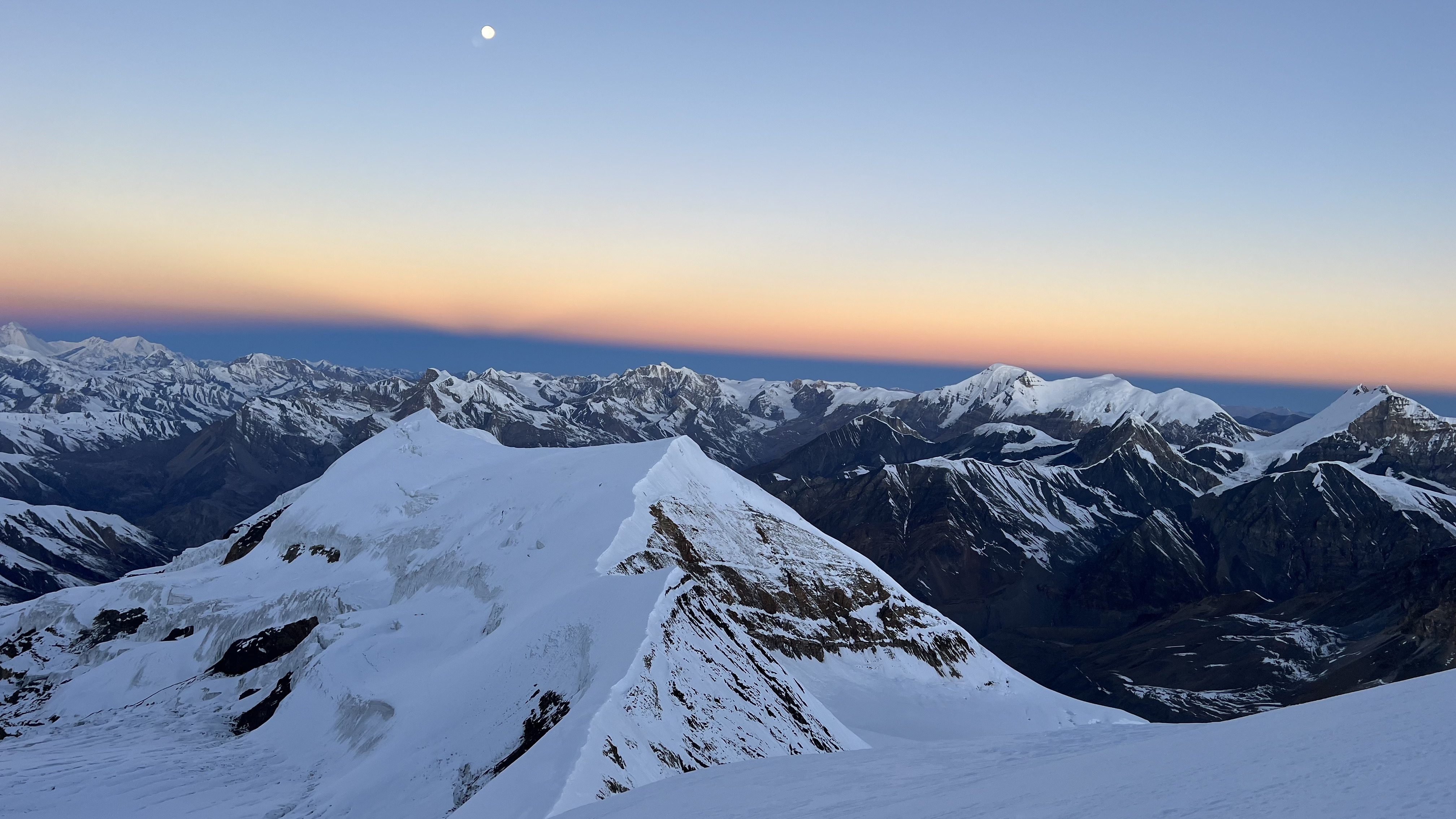Himlung Himal, standing at an impressive height of 7,126 meters, is one of the most beautiful peaks in the Nepal Himalayas. It is well-known among climbers for being both exciting and approachable. Unlike some other 7,000-meter peaks that require advanced technical skills, Himlung Himal is considered less complicated, making it an excellent choice for high-altitude climbing enthusiasts who want to take on a big challenge but are not yet ready for the most dangerous and technical climbs. The expedition involves essential mountaineering gear such as crampons, ice axes, and fixed ropes, which are necessary for glacier travel, snow climbing, and icefall crossing. Despite its less demanding routes, this peak still requires serious preparation due to the high altitude, remote trekking conditions, and harsh terrain. Many climbers have successfully reached the summit, known for its remarkable summit success rate, according to the Himalayan Database.
Himlung Himal is located in a remote part of Nepal, nestled between the famous Manaslu and Annapurna mountain ranges. The Annapurna Circuit trek, which serves as the starting route for this adventure, is already iconic among trekkers worldwide. This peaceful and less crowded area makes the expedition feel like an immersive Himalayan adventure, far from the usual trekking paths. The journey is filled with breathtaking scenery, including towering snow-covered peaks, wide valleys, and pristine Himalayan landscapes. From the summit ridge, climbers are rewarded with unforgettable panoramic views of the surrounding mountains and endless snowy horizons.
The trek to Himlung Himal base camp passes through remote villages such as Nar and Phu. These culturally rich villages give climbers a glimpse into the traditional lifestyle, customs, and hospitality of the local people, who have preserved their ancient heritage for centuries. Reaching base camp at an altitude of 4,900 meters is a key acclimatization step, allowing climbers to adjust to the thin air before pushing toward higher camps.
The climbing route on Himlung Himal was improved in 2013 by Swiss mountaineer Kari Kobler, who designed a safer and more efficient path along the mountain’s northwest ridge. This route strategically avoids some technical dangers found on other climbing routes. However, the expedition remains physically demanding, involving fixed rope management, glacier travel, and technical climbing techniques to safely reach the top. High camp setups play a critical role in ensuring climbers are well-prepared for the final summit push.
As climbers ascend, they must keep a close eye on weather conditions, as changing weather patterns can significantly impact their journey. Sherpa guides, renowned for their expertise and knowledge of Himalayan peaks, provide essential support during the climb, ensuring safety and guidance during challenging sections of the route. Oxygen bottles may be used during the summit push to help with breathing at extreme altitudes.
Climbing Himlung Himal is more than just reaching a summit – it is an unforgettable combination of adventure, cultural exploration, and the peaceful beauty of Nepal’s untouched wilderness. The expedition offers a rare opportunity to experience remote trekking, technical climbing, and the timeless charm of the Himalayan range. Whether it’s the thrill of ice climbing, the challenge of rope management on icy slopes, or the serene moments spent in acclimatization camps, every aspect of this journey adds to the allure of high-altitude alpine climbing.
For those seeking adventure, natural beauty, and the spirit of mountaineering, Himlung Himal provides an extraordinary expedition that takes you deep into the heart of the Himalayas, offering an unmatched experience of high-altitude climbing, cultural immersion, and the awe-inspiring grandeur of the world’s highest mountains.

